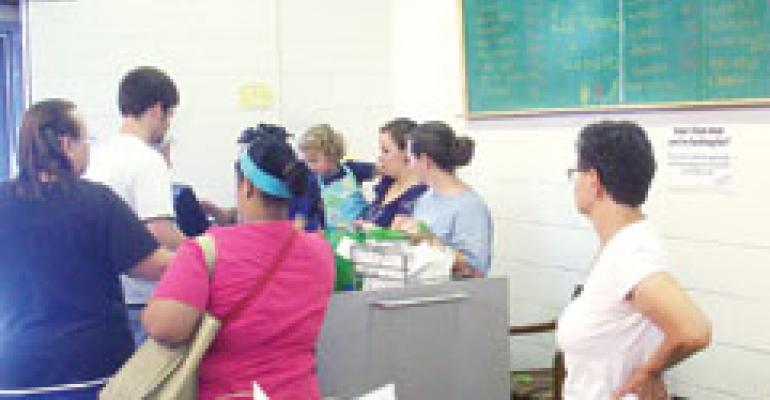Fresh local produce is now available in a St. Louis ‘food desert,’ thanks to the opening of a new co-op in July.

Old North Grocery Co-op works with nearby farmers and a community garden, which means 80% to 90% of its produce during the spring, summer and fall is from local sources. The store works directly with these farmers, which keeps prices low. In the winter months, produce will come from further afield and will be more expensive as a result.
Produce takes up about half of the store's selection but it's not just fruits and vegetables that are local. Meat, dairy products and eggs come from local farmers year-round. Other local businesses provide freshly baked bread, roasted coffee, pasta sauces, salsa and potato chips. For those items that can't be found locally, store manager Sarah Kate Buckles goes through a distributor, and in that case, finds one as local as she can.
The store does not carry traditional items because most of the convenience stores in the neighborhood do.
“Since everyone else has them, we try to focus on not having them,” said Buckles. Instead, the store offers healthier products like low-sodium and low-sugar canned goods, individual packets of raisins or pretzels, juices, waters and only one soda, which is produced by a local company.
One problem has been what to carry to meet the needs of a neighborhood that is “ethnically, economically and racially diverse,” said Buckles. “There's even a retirement home two blocks away so there are a lot of people on a fixed income.”
To cater to such a mixed population, Buckles makes sure she gets lots of feedback from her customers. One technique that has been particularly successful was asking shoppers to bring in their receipts from other stores “so I can get an idea of what people are looking for that they don't get here,” she explained.
This mixed community was united in its wish for a place to shop for fresh foods.
“The whole creation of a grocery store here was at the request of the community,” said Sean Thomas, executive director of the nonprofit Old North St. Louis Restoration Group. “It was a response to a real need and it is filling a void.”
The group originally hoped to bring in a local chain “but [the chains] just weren't interested because North St. Louis has an unfounded bad reputation,” explained Buckles.
The biggest issue for local residents was that only 40% of them have access to a vehicle, and public transportation to the nearest store 30 minutes away was difficult with bags of groceries (and possibly children) in tow.
Now, the co-op's shoppers arrive mostly by foot, although Buckles pointed out that the store has created such a buzz that people also shop here from outside the neighborhood.
The co-op already has a “robust” membership, she said. However, consumers can shop the store without being members. Membership is a one-time fee of $80, or $60 for senior citizens and students and $15 for low-income customers. Members can run for the board of directors, decide what the store carries, order in bulk and get discounts.
Many of the farmers also shop here, because they have small urban farms and live in the neighborhood.
“That builds loyalty because the customers look for products from farmers they know,” explained Buckles. “I think putting a face with the producer of your food really changes people's perception of how they're eating and what they're eating.”
Old North works mostly with small farmers, but through its distributors also buys from larger farms, mostly non-local products such as bananas and oranges. Some vegetables, such as okra, are grown in the community garden 100 feet away.
The farmers are prominent in the store. At the entrance a large poster shows a map of Missouri and some parts of Illinois and pushpins highlight where the foods are grown. Posters and leaflets about produce, nutrition and healthy cooking can also be found throughout the store, as well as recipe cards.
And the growers are often around, too. Produce from Lee Farms, about 90 miles from the city, for example, comes twice weekly and is delivered by Rusty Lee, who spends time in the store, talking to customers.”

